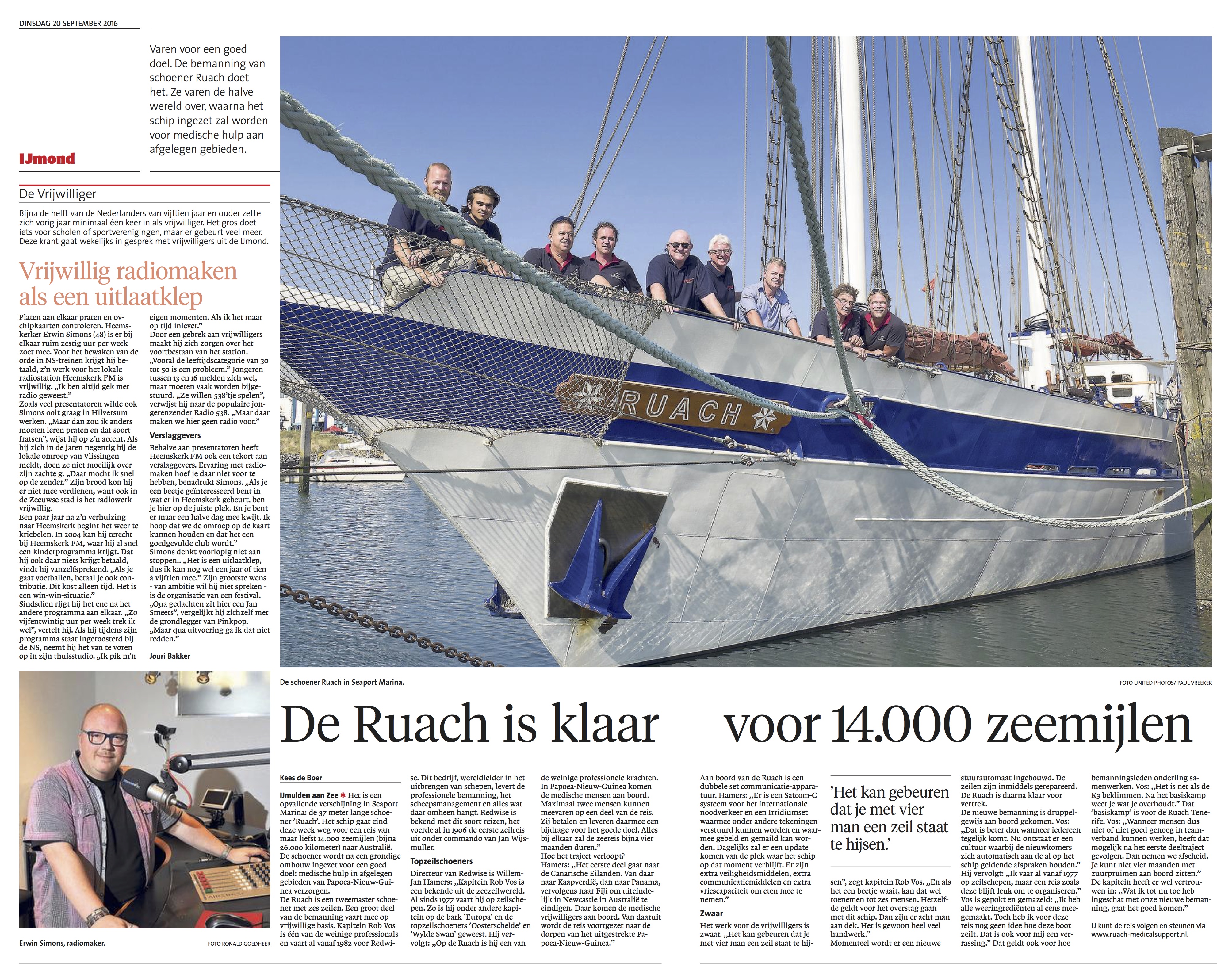
The above article was recently published in the IJmudien Courant, the local newspaper in the Dutch city where the Ruach is currently docked. Below is the English translation:
The Ruach is Ready for 14, 000 Nautical Miles
The 37-metre-long schooner, Ruach, is a standout in the Seaport Mariner. The ship will leave at the end of this week for a journey of 14, 000 nautical miles (almost 26, 000 kilometres) to Australia. After thorough modifications the schooner will be used for a positive purpose; offering medical help in hard-to-reach areas in Papua New Guinea.
The Ruach is a double masted schooner with six sails. A large part of the crew is joining on a voluntary basis. Captain Rob Vos is one of the professionals on board and has been sailing for Redwise since 1982. This company, a world leader in designing ships, is supplying the professional crew as well as the management of the ship and all that it involves. Redwise is familiar with this type of journey – in 1906 they organised their first sailing trip of its kind with commander Jan Wijsmuller.
Topsail Schooners
The director of Redwise is Willem-Jan Hamers: “Captain Rob Vos is well known in the sea sailing world. He has been sailing since 1977. He has been captain of the bark ‘Europa’ and top sailor schooner ‘Oosterschelde’ and ‘Wylde Swan’.” He adds: “On the Ruach he [Captain Vos] will be one of the few professionals on board.” In PNG the team will be joined by medical personnel. There are places aboard for two extra people to join for parts of this journey. They will pay their way, which will provide a contribution to the charity. Altogether this trip will take about four months.
What will the journey look like?
Hamers: “On the first leg they will head to the Canary Islands. From there to Cape Verde, then on to Panama followed by Fiji and ending in Newcastle, Australia. This is where the medical volunteers will come aboard. From there they will continue their journey to the villages of vast Papua New Guinea.”
There is a double set of communication equipment installed aboard the Ruach.
Hamers: “There is a Satcom-C system for international emergency traffic and an Irridiumset with which you can send drawings, make calls and send emails. Every day we will receive an update from the ship’s current location. There is additional safety equipment, additional means of communication and additional freezing capacity to store food.
Heavy
The work for the volunteers is heavy. “It can take four men to hoist a sail,” says Captain Rob Vos, “and when it’s windy it may take up to six men. The same applies for when the ship tacks. There will only be eight men on deck. It’s a lot of hard work.”
Currently a new autopilot is being installed on the ship and the sails have all been repaired. The Ruach is ready to leave.
The new crew arrived aboard one at a time. Vos: “That is better than if everyone arrived at once. This way it creates a culture where newcomers will automatically embrace the already existing agreements.”
He adds: “I have been sailing on sailing ships since 1977, but a journey like this is still fun to organise.” Vos is tried and tested: “I have experienced ever weather ingredient there is. However, I am unfamiliar with how this boat sails, so it will be a surprise for me as well.”
The same applies for how the crew will work together. Vos: “It’s like climbing the K3. After base camp you know what you are left with.” That ‘base camp’ for the Ruach is Tenerife. Vos: “If there is difficulty among the crew to bond together, it will cause more problems later on. Then we will leave. You can’t have a grumpy face aboard for four months.”
The captain is optimistic: “From what I have seen of this crew so far we should be fine.”
You can follow and support the journey through: www.ruach-medicalsupport.nl.